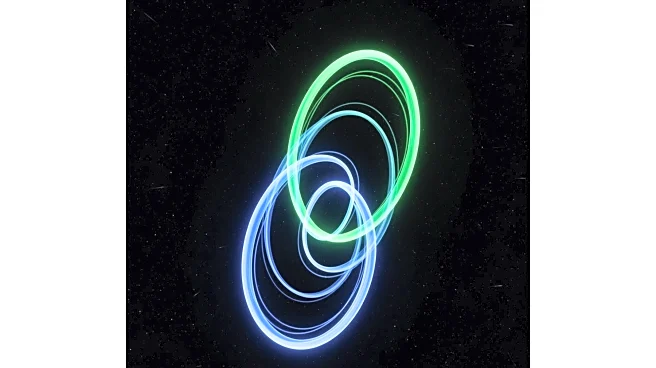What's Happening?
NASA's Magnetospheric Multiscale Mission (MMS) has detected the first magnetic switchback near Earth, marking a significant discovery in space physics. A magnetic switchback is a zigzag in the magnetic field,
previously observed near the Sun, but now identified at the edge of Earth's magnetosphere. This discovery was led by physicist E. O. McDougall from the University of New Hampshire. The switchback was found in the magnetosheath, a turbulent layer outside the magnetosphere, where diverted solar wind flows around Earth's magnetic bubble. The MMS mission, designed to study magnetic reconnection, captured this event, which involved a twisting patch of plasma that rotated and rebounded. High-energy electrons within the structure indicated material from Earth's field. The detection of this switchback provides a new opportunity to study space weather phenomena without sending probes into the Sun.
Why It's Important?
The detection of a magnetic switchback near Earth is crucial for understanding space weather, which can impact power grids, radio communications, and satellite operations. These switchbacks mix solar and terrestrial plasma, altering energy movement into the upper atmosphere. By studying these phenomena near Earth, scientists can develop better forecasts for space weather conditions that affect technology and astronauts. The MMS mission's ability to capture these events in three dimensions allows for detailed analysis of magnetic reconnection processes, which are essential for predicting disturbances in near-Earth space. This research could lead to improved alerts for operators managing satellites and crewed missions, enhancing the safety and reliability of space-based technologies.
What's Next?
Future observations by the MMS mission will focus on testing how often switchbacks form at the boundary between the solar wind and Earth's magnetic field, and under what conditions they occur. Researchers aim to compare events during quiet periods and fast solar wind streams to understand the roles of turbulence and reconnection. These observations will be integrated into physics-based simulations to track energy cascades across scales, helping to refine predictions of space weather impacts. Space agencies may use this data to enhance alerts for satellite operators and improve the design of instruments targeting reconnection layers.
Beyond the Headlines
The discovery of magnetic switchbacks near Earth opens new avenues for understanding the dynamics of the magnetosphere and its interaction with solar wind. This research could unify various observations of space weather phenomena and provide insights into the processes that drive energy injection into Earth's atmosphere. By mapping the detailed structure of switchbacks, scientists can better understand how the magnetosphere twists and relaxes, potentially leading to more accurate models of space weather. This knowledge is vital for developing strategies to mitigate the effects of space weather on technological systems and human activities in space.













